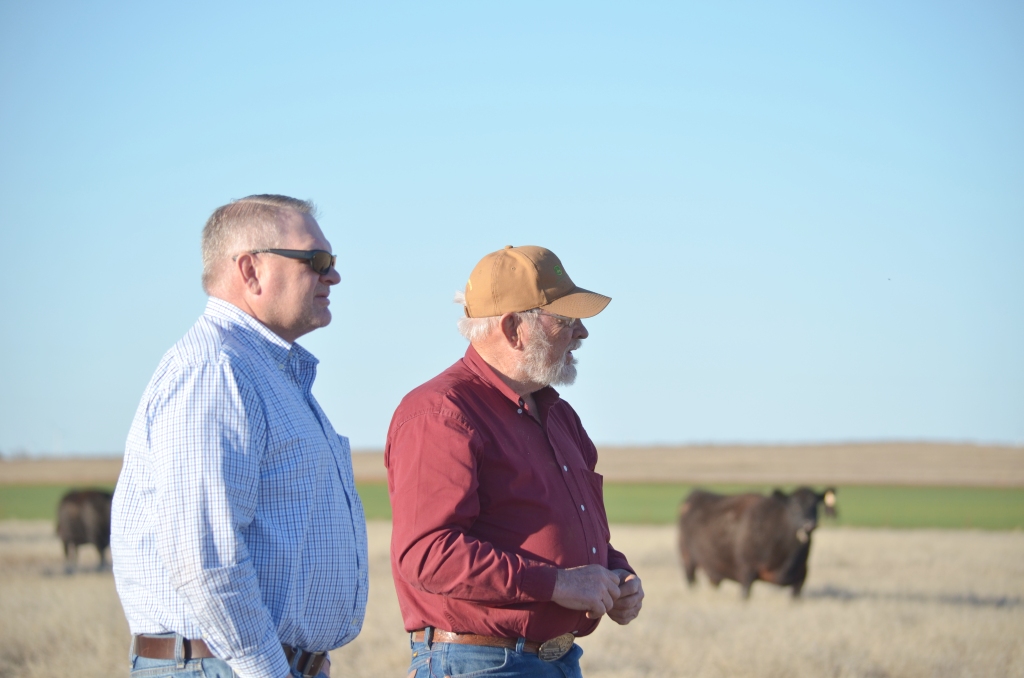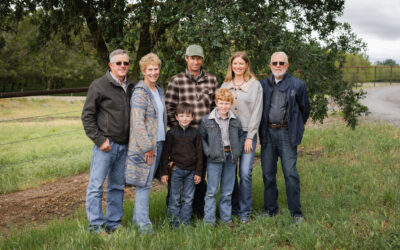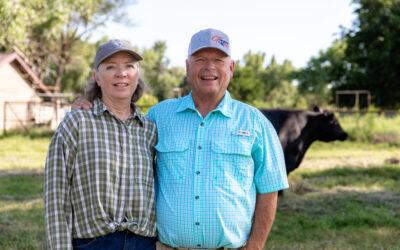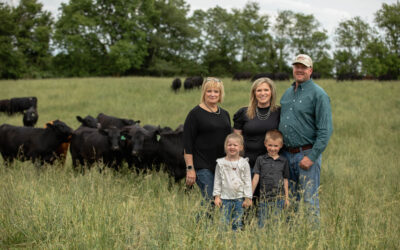
Doing what works
But among the miles of crop ground I found a father-son duo sticking out in a good way – raising quality cattle.
“Its very satisfying,” says Jim Richert, the dad. “It’s a lot of fun and I enjoy it.”
With a smile on his face, I see he enjoys talking about the cattle more than the crops. His eye for quality is also apparent.
“Not many people doing what we’re doing in the area,” he says. “Look around, this is corn ground. Ten years ago we were farming this, but turned it into grass for more cattle.”
It all started with Jim’s father. When an area of land didn’t have the best soil for growing crops, he turned it back to native pasture grasses for cows. Experience with that small section spurred Jim to believe grass and cattle could thrive here; even if his neighbors didn’t always think so.

“When grids developed, then we really started concentrating on selecting sires for carcass traits,” he says. “Probably one of the best things we ever did. It’s amazing by doing that our premiums just keep getting better.”
The Richerts aren’t only selecting for carcass traits though. They’re production oriented and know each live calf can add or subtract from the bottom line. With a 60-day bull turnout they expect to have 80% of their calf crop within the first 30 days of calving season. Any open females don’t stay around. The cowherd has to be productive and their calves have to excel on the rail to earn their keep.

“We’re looking at the numbers,” Jay says. “When it comes to selection and improvement, GeneMax® is a way you can get there faster.”
There are plenty of neighbors who question the cowherd.
“In this part of the state you’re not going to find many cowmen,” Jim says. “You know you got to stay with what works for you. The people that diversified what they’re doing in this area are the best off.”
So that’s what the Richerts are doing, and from what I could see, they’re gaining attention in all the right ways.
~Katy
Industry Information intern Katy Kemp is currently pursuing a master’s degree in ag communications from Oklahoma State University.
You may also like
Legacy in the Golden Land
On a quiet stretch of Northern California rangeland, a different story unfolds. The Borror family’s legacy modestly speaks through the cattle they raise, the ground they steward. The generations who’ve made a life here demonstrate commitment to doing things right, even when no one is watching.
Helping Hands, Helping Herds
“When I die, I want to come back as one of your cows,” murmurs a friend to Steve Zybach. Full to the brim from an alfalfa ration every day, bountiful fields of lovegrass stretched out across the Texas Panhandle—and owners who leave no ounce of cattle care up for question. The Zybachs’ motivation for this level of dedication to their Angus cattle is simply love.
An Ambassador for All
Joanie, with daughter Lindsey and her husband, Adam Hall, raise registered Angus cattle with two primary goals: producing high-quality seedstock that perform well in a wide variety of environments and ensuring end-user satisfaction. Those goals tie everything together, from promoting Angus to other producers to sharing their story with CAB partners and beef consumers.




